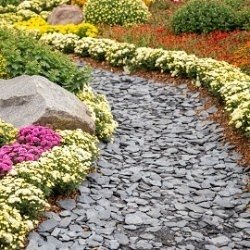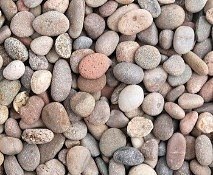
The gardeners guide to decorative stone
5 Minute Read
Decorative stone is an easy way to add a stylish finishing touch to your garden, from pebbles to cobbles, gravel to chippings, there's something to suit all garden decor styles. Whether you're looking to enhance your beds and borders with cobbles, create a cottage garden path with gravel or neaten up your patio area, this guide will show you how to amp up your garden with the use of decorative stone.Landscaping with decorative stone
Decorative stone has a multitude of uses in the garden. Pebbles can be used to make your borders look neater, gravel can make up a pathway, slate chippings can enhance ornamental borders or water features, but one thing is certain, decorative stone gives the garden a generally tidier and finished overall look.
In this article, find out more about how to use decorative stone and the different options available when it comes to designing your landscape garden.
How to use decorative stone in your garden
Step 1: Tidy up
Firstly, you will need to remove anything that is going to get in your way. Be thorough and remove all the weeds, if you find any deep-rooted weeds, you may need to use a weedkiller to prevent them from growing back.
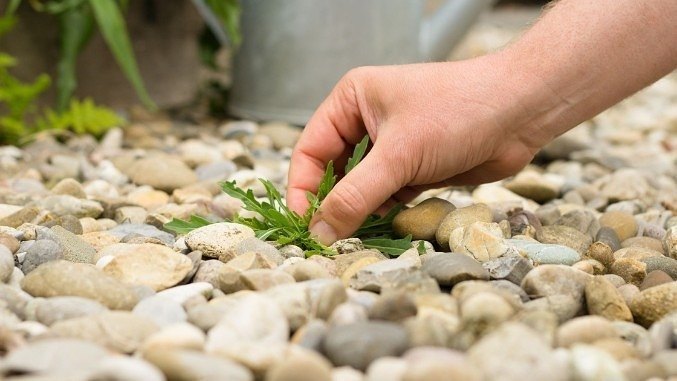
Step 2: Level the ground
Next, you'll need a steel or heavy-duty rake to level out the ground, making sure that you have an even surface to work with. This will also help you identify any weeds you may have missed and give you a clean and fresh area to lay your stone. If any small items such as twigs, leaves, weeds or debris appear when you are raking, make sure you remove them completely.
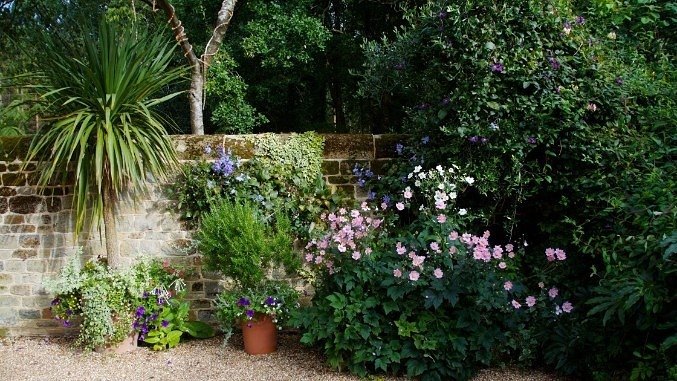
Step 3: Weed control
Before you put any stone down, you will want to put a weed control membrane on the area. We would recommend ensuring the membrane is laid at an appropriate depth depending on the size of decorative stone you are using.
For example, if the stone you are using is 10mm then you should lay the membrane at around 40mm, 50mm for medium-sized stone and if you are using large cobbles, around 100mm of depth would be suitable.
For large areas where multiple sheets of the membrane are essential, you should overlap the sheets in order to avoid any weeds coming through between the gaps. When laying your weed control membrane, make sure you keep some extra material overhanging the edges to prevent weeds from growing around the outside of the borders.
If you want to add plants to the area, such as plants around a border make sure that you have a rough idea of where you would like them to go. Once you know where you are going to plant them, draw an X on your membrane after it has been placed down and cut along the X shape.
Aim to keep the hole in the membrane as small as possible as this will help you keep weeds at bay.
For example, if the stone you are using is 10mm then you should lay the membrane at around 40mm, 50mm for medium-sized stone and if you are using large cobbles, around 100mm of depth would be suitable.
For large areas where multiple sheets of the membrane are essential, you should overlap the sheets in order to avoid any weeds coming through between the gaps. When laying your weed control membrane, make sure you keep some extra material overhanging the edges to prevent weeds from growing around the outside of the borders.
If you want to add plants to the area, such as plants around a border make sure that you have a rough idea of where you would like them to go. Once you know where you are going to plant them, draw an X on your membrane after it has been placed down and cut along the X shape.
Aim to keep the hole in the membrane as small as possible as this will help you keep weeds at bay.
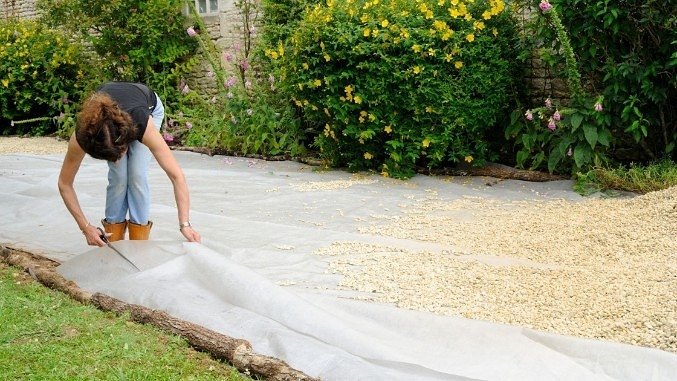
Step 4: Apply your decorative stone
When laying your stones you need to ensure you have got around 40-50mm of depth to maximise your coverage, this will of course depend on the size of your aggregates themselves. When you have laid the appropriate amount of stone, you will need to level it out using a rake in order to give it an even finish.
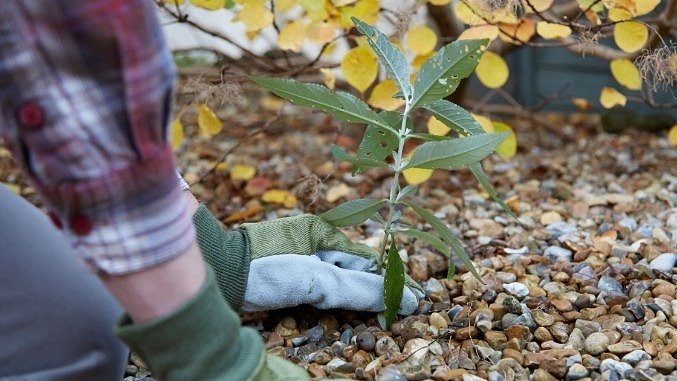
Styling ideas
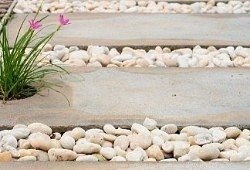
Pebbles
Pebbles can help to create definition, place pebbles between paving slabs to create a cottage garden path look.shop now

Cobbles
A thin row alongside a path and a bed to help define the edges or even to create a border definition to separate a hedge and a path, for exampleshop now
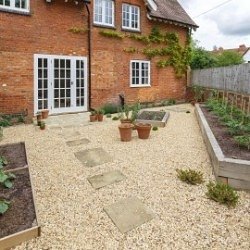
Gravel 'aggregates'
Ornamental stone chippings can be used in water features, on pathways and driveways, or to create a themed garden. Decorative stone landscaping can be used to zone areas of the garden and provide hard-wearing surfaces in high traffic areas.shop now
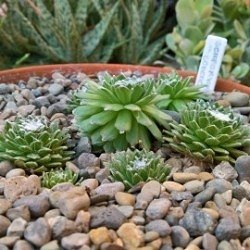
Pot toppers
Decorative gravel can be used in multiple places in the garden to provide a neat finish to pots and flower beds and can also reduce weed growth.shop now
Shop all decorative stone
Comments (0)
Why not be the first to send us your thoughts?

